Overcoming nerve damage with kettlebells, the Nathan Gagnon story
By Adrienne Harvey, SrPCC, RKC-II, CK-FMS
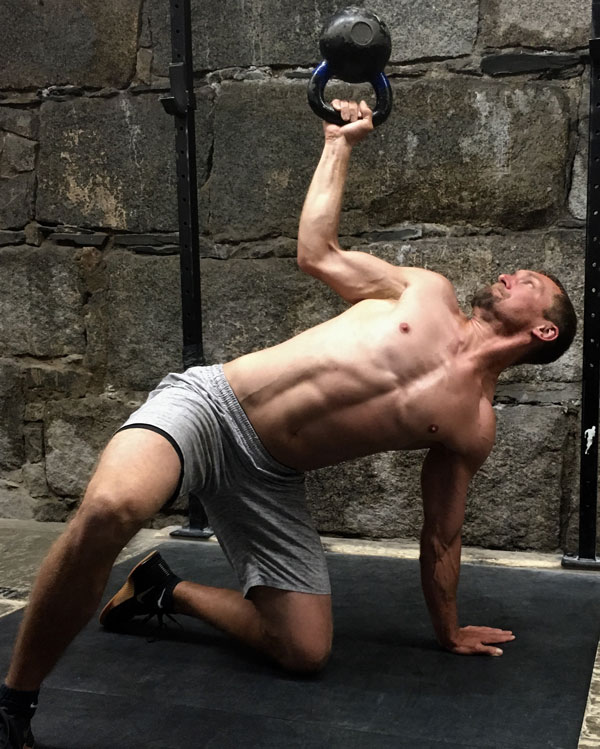
Dragon Door: How did you first get into kettlebells?
Nathan Gagnon: I was first introduced to kettlebells in the workouts at the CrossFit gym.
Angelo Gala used to work at CrossFit Back Bay and programmed for our competition team. Obviously, he included a lot of kettlebell work like get-ups, around-the-worlds, you name it—that was how I dove deeper.
Unfortunately, I had a couple of injuries and decided to back out of the competition team. But, I started to use
kettlebells more and more and found a ton of applications for them. I decided to take the RKC to earn the official stamp of approval showing that I know what I am talking about!
Dragon Door: Are you a full time trainer at CrossFit Back Bay?
Nathan Gagnon: Yes!
Dragon Door: Have you always had an athletic background, and if so, did it influence your career choices?
Nathan Gagnon: Training hasn’t always been my career, but I've had an athletic background. Growing up, I played nearly every sport—soccer, football, basketball, I ran track, cross country, and I was on the golf team in high school. But even though I did a little bit of everything, basketball was my main sport. At summer basketball camps, I was first introduced to the weight room, and strength and conditioning.
As for my career, I started coaching part time about two years ago. At the time, I was an administrator at Northeastern University, a college in Boston. On the outside, I was progressing in my career, I was at a director level position with a direct report. I had everything I was supposed to want in my career, but working at a desk or in a cubical all week wasn’t as fulfilling as the few hours when I was able to coach on the weekends. So, a few months ago I decided to coach full time. I haven’t regretted that decision for half a second, I’m really happy with the choice I made.
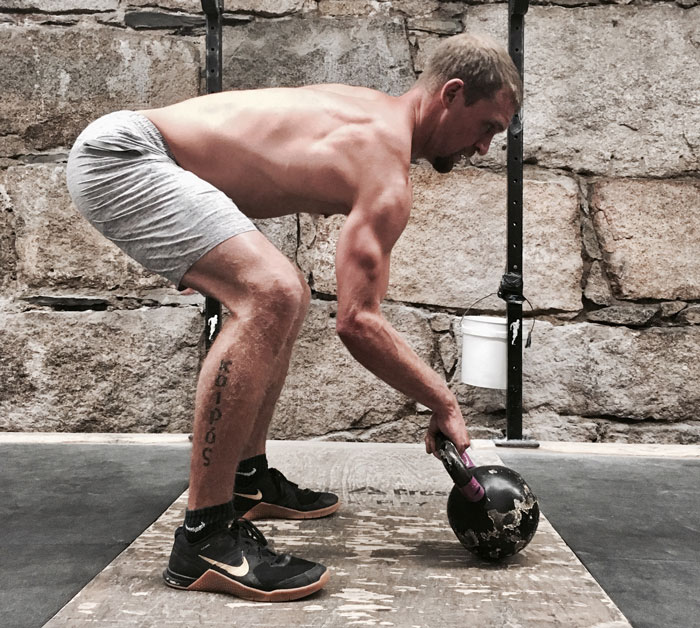
Dragon Door: It takes a lot of courage to make a massive career change like that!
Nathan Gagnon: Even though I didn’t have any regrets, I definitely freaked out a little bit at first!
Dragon Door: As a coach, are you mostly leading groups or training individuals?
Nathan Gagnon: Both. But we mainly have group classes at CrossFit, including weightlifting and strength classes, endurance programming, onramp and fundamentals. We also have one on one training.
Dragon Door: Other than getting away from a desk, what inspired you to start coaching full time?
Nathan Gagnon: Sports, athletics and fitness are my passion, so I was just pulled in that direction. When I was growing up, people told me that I should be a basketball coach, or
personal trainer because even when school was out, I would still go to the gym. Then, when I really got into CrossFit, I dove into the theory and programming behind it. Angelo is a great, thoughtful mentor, learning from people like him taught me that there was much more to coaching. After I got a taste of it, I just jumped in.
Dragon Door: Along with playing sports, what did you study in school?
Nathan Gagnon: I was a political science and philosophy double major at the University of Vermont. Then I got a masters degree in non-profit management.
Dragon Door: I can see how that could influence your coaching! What's your favorite kettlebell exercise?
Nathan Gagnon: It's a tough call, but I don't think anyone can go wrong with the get-up. It works the whole body through all planes of motion, along with challenging the core and strengthening shoulder stability. I like to use it in warm-ups and the beginning of workouts. It’s useful when working with a new client because you can learn so much about how someone moves—and their restrictions—when they first try a get-up. It’s powerful both in how well it gets everything firing, and how it can get someone ready to work out. When working with a new athlete, the get-up can point out their sticking points.
It has also helped me personally. When I was born, I had an injury to my neck in a nerve center called the bracioplexus. It’s in an area of the spine near the c5 and c6. When I was born, my right arm was paralyzed. The condition is called Erb’s Palsy, and while I eventually gained movement, but I've never had a full range of motion with my right arm. I don’t have full extension, it’s a little weaker than my left arm, and there's the musculature around that shoulder is a little bit different. But, I can practice get-ups with my fully functioning left arm, and my right arm. So, I wanted to say that someone with erb's palsy can work with kettlebells. Exercises like the
get-up or kettlebell snatches can help anyone, but in my case it they have also helped with my personal conquest against the physical challenge I’ve had since the day I was born.
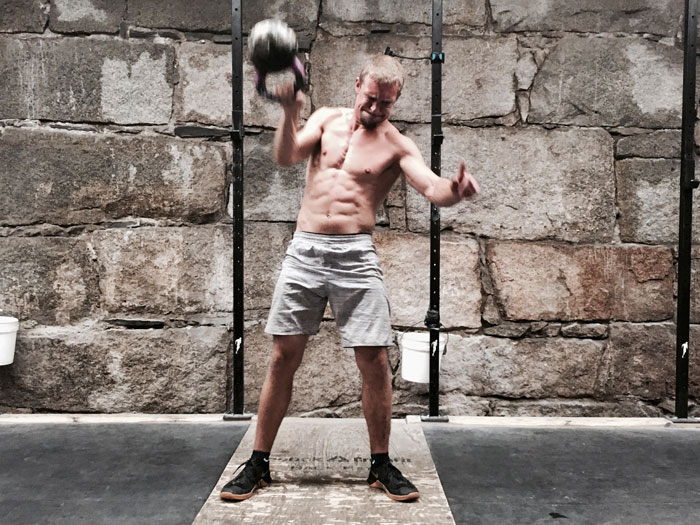
Dragon Door: What kind of improvements have you been able to make?
Nathan Gagnon: My strength, range of motion, coordination, and agility I now have with my right arm is probably better than anyone would have expected when I was born with my right arm paralyzed. It also helps that since I was a little kid, I was never discouraged from playing baseball, basketball or other activities where I might have had a disadvantage. My parents encouraged me to do everything. I have always been a competitive athlete. I didn’t want to be the best for a person with an impaired arm, I wanted to just be the best athlete out there.
Specifically with kettlebells, I like that I can to work each arm individually. Anything I can do with my left arm, I want to be able to do with my right arm. For example, if I can snatch a
32kg kettlebell with my left arm, then I need to be able to do that with my right arm, too. Any athlete will want to avoid big imbalances. Since I have nerve damage on one side of my body, I’ll always have one side that looks different and will never be quite as strong. But, I am working to getting it as close as I can. The variety of movements and planes of motion you can with through with a kettlebell makes it a more versatile and helpful tool in my experience.
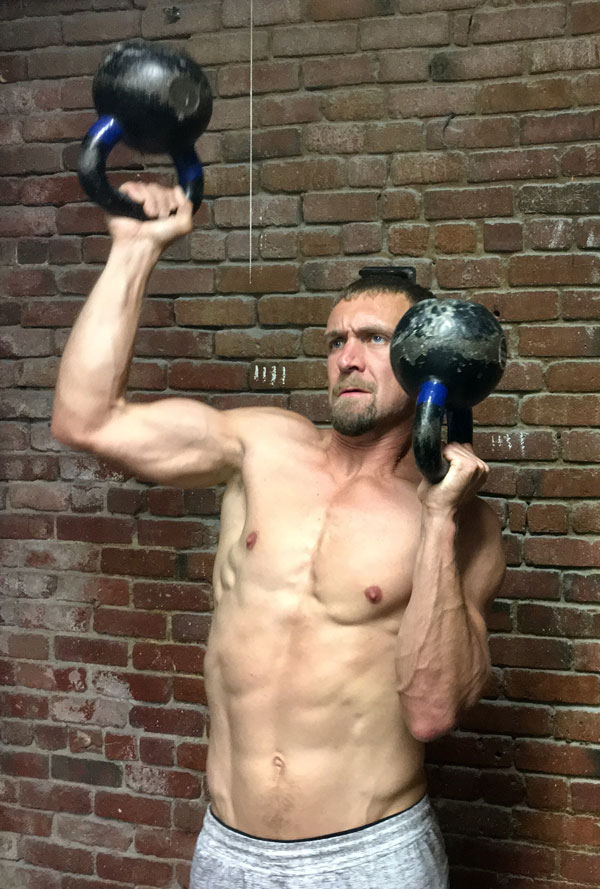
Dragon Door: Since you came to kettlebells through CrossFit before doing the RKC, do you find that the two systems are compatible?
Nathan Gagnon: They're totally compatible. All the movements covered in the level one RKC, you can use the very next day in the CrossFit gym. I’ve found many transferable skills that come straight from the RKC kettlebell swing which apply to other movements in Olympic barbell lifting. One of my favorite things in the
RKC course was that while we learned the kettlebell swing first, we didn’t actually swing a kettlebell for like two hours because we were breaking it down into such finely tuned pieces.
The day after the RKC workshop, I was coaching push jerks at the CrossFit gym. While I was talking about the dip and drive of the barbell push jerk I realized we were doing exactly the same "squeezing of glutes" and keeping the core tight as the Hardstyle finish at the top of a kettlebell swing.
I felt like I was a much better CrossFit coach after I did the RKC. Even though we were working on completely different movements, it was totally transferrable. Our endurance classes include a lot of kettlebell work like goblet squats, swings, cleans, and kettlebell rack walks. Now I feel very well prepared to coach the athletes to properly hold the kettlebell. There’s a proper front rack kettlebell position and we want to keep the athletes’ shoulders as safe as possible while getting the maximum benefit from every movement. So the RKC was a huge help for me with coaching.
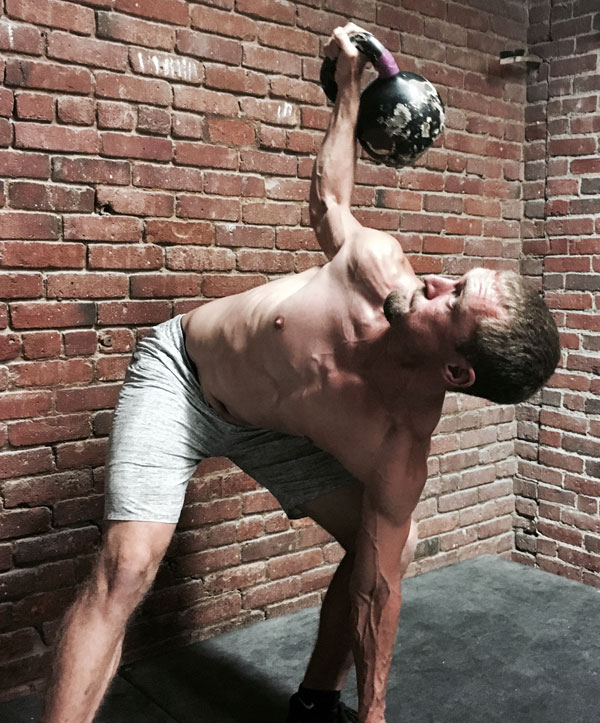
Dragon Door: Did you face any particular challenges while preparing for the RKC?
Nathan Gagnon: I didn't have any major challenges while preparing for it because I was already pretty familiar with the movements. Having Angelo both as a colleague and the coach for my programming prepared me as I began my own training for the workshop. Of course I wanted to be sure I could pass the snatch test. Showing that someone with Erb’s Palsy could do it was another one of my milestones since 50 of those 100 snatches would be done with my arm that was paralyzed when I was born! I practiced the test and could do it in four minutes and ten sections before the RKC, so I knew I had time to spare. 4:10. Even though I wasn't super nervous about it, it was definitely on my mind before taking the course.
Dragon Door: Now that you've earned your RKC certification, what's your next goal?
Nathan Gagnon: In terms of kettlebell coaching workshops, I am already thinking about the
RKC Level 2 and looking out for when one will be held near Boston. Also, I want to find out how long it will take for me to do the snatch test with a 32kg kettlebell, then I would like to try to get that down to 5 minutes as a personal goal for fun. I’d like to see how fast I can do a
snatch test, since Angelo once told me he did it in 3:20. I am also working on getting a sub five minute mile on the track.
Aside from that, I want to keep getting better as a coach. While I've been coaching for a couple of years, I’ve only been full time for just 3-4 months. So I want to continue improving in all aspects of coaching. I love all the different domains of fitness where I can improve, and help others improve—strength, endurance, flexibility. There’s such a human component when motivating different types of athletes and building relationships with different kinds of people. Developing patience and compassion are important for being a really good coach and trainer.
Back